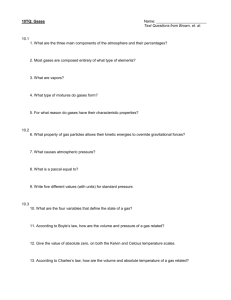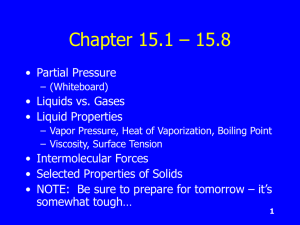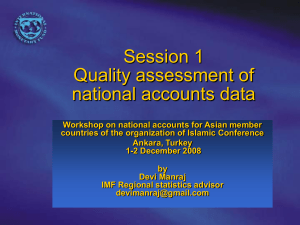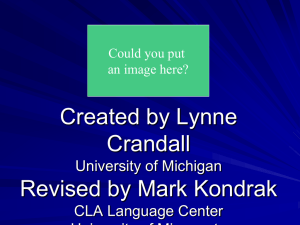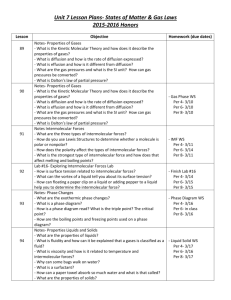CHEMISTRY TEST STUDY GUIDE
advertisement
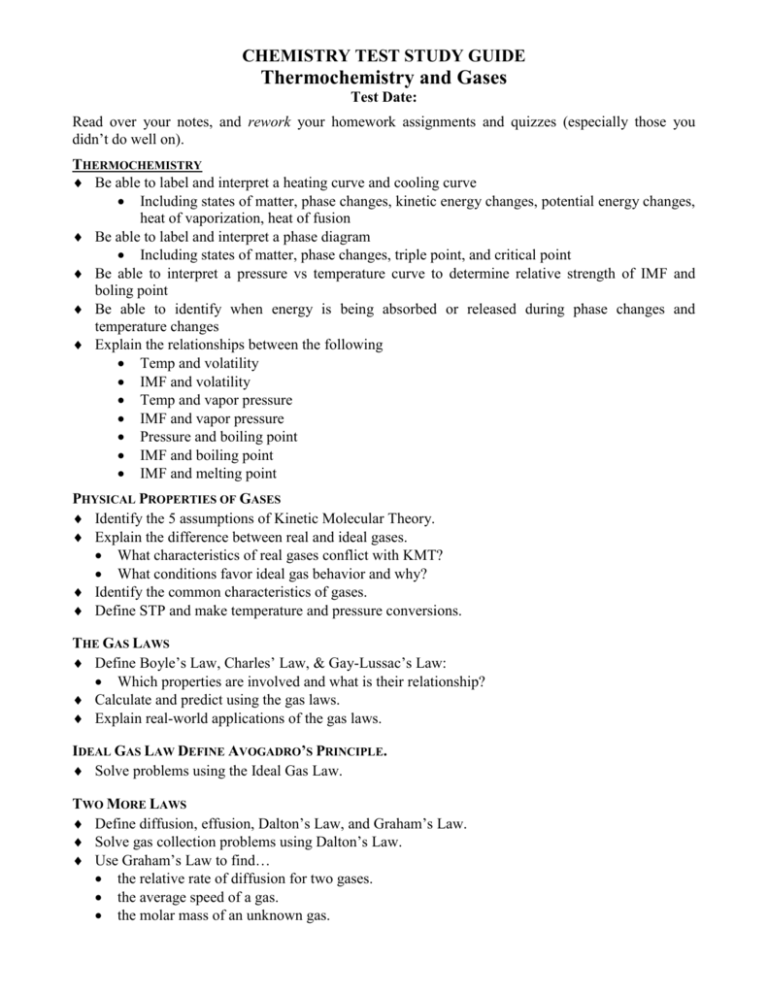
CHEMISTRY TEST STUDY GUIDE Thermochemistry and Gases Test Date: Read over your notes, and rework your homework assignments and quizzes (especially those you didn’t do well on). THERMOCHEMISTRY Be able to label and interpret a heating curve and cooling curve Including states of matter, phase changes, kinetic energy changes, potential energy changes, heat of vaporization, heat of fusion Be able to label and interpret a phase diagram Including states of matter, phase changes, triple point, and critical point Be able to interpret a pressure vs temperature curve to determine relative strength of IMF and boling point Be able to identify when energy is being absorbed or released during phase changes and temperature changes Explain the relationships between the following Temp and volatility IMF and volatility Temp and vapor pressure IMF and vapor pressure Pressure and boiling point IMF and boiling point IMF and melting point PHYSICAL PROPERTIES OF GASES Identify the 5 assumptions of Kinetic Molecular Theory. Explain the difference between real and ideal gases. What characteristics of real gases conflict with KMT? What conditions favor ideal gas behavior and why? Identify the common characteristics of gases. Define STP and make temperature and pressure conversions. THE GAS LAWS Define Boyle’s Law, Charles’ Law, & Gay-Lussac’s Law: Which properties are involved and what is their relationship? Calculate and predict using the gas laws. Explain real-world applications of the gas laws. IDEAL GAS LAW DEFINE AVOGADRO’S PRINCIPLE. Solve problems using the Ideal Gas Law. TWO MORE LAWS Define diffusion, effusion, Dalton’s Law, and Graham’s Law. Solve gas collection problems using Dalton’s Law. Use Graham’s Law to find… the relative rate of diffusion for two gases. the average speed of a gas. the molar mass of an unknown gas.





